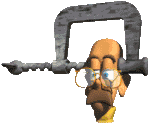
Buena pregunta. It's so good that the explanation is in inglés. To try to explain it in Spanish to an American student would serve no purpose. Pues, ¡Vámonos!
Before we get to the "what" part of the question, let's figure out why you need to know it. If you are reading this page, I assume you are a student of Spanish, and if you are not lost, you are probably an advanced student. The subjunctive is very common in Spanish, and it is included heavily in all major language exams- SAT II® and Advanced Placement Spanish® in particular. In college it is always expected to have been studied in higher level classes. In order to use the language professionally, and in order to at least appear educated and highly proficient in the language, it should be mastered.
A word of caution, though. As with any language skill acquisition, the subjunctive must be used repeatedly before it becomes a natural part of your language center in your brain. So be patient as you study, it will take a while before you "get it".
The subjunctive, as you have seen, is a different verb form. What you have worked with so far is the formation of the present subjunctive and in order to form it, you used the present indicative. By looking at the names of these "things", we can determine that they are different in some way other than tense, or time period. (They are both present tense, ¿verdad?) So what else can a verb do besides determine tense? Read along and see if you can comprehend this.
Everything you have done so far has been mostly the "indicative". (At some point you have studied the imperative (commands) also, ¿no? You have probably studied various simple tenses- present, preterite, imperfect, future and conditional; and some compound tenses- progressives & perfects. The difference between the various tenses is the time period. Each of these indicative tenses relates to an action that happens, happened, will happen, etc.
Look at these sentences:
All of these sentences state an action that does happen.
They are simple sentences.
The subjunctive can never be found in a simple sentence.
Look at the following sentences and see if you can tell the difference
between them and the ones above.
First let's look at the type of sentence. These are not simple sentences, but are complex sentences. That is to say that there is an independent (main) clause and a dependent (subordinate) clause. In the three sentences in which the subjunctive is used, the clause with the action in the subjunctive is subordinate or dependent. For the time being, we'll say that all these clauses will start with "QUE". For now...You can't have the subjunctive in the clause unless it starts with "QUE".
OK. So do all clauses that start with "QUE" use
the subjunctive? Let's find out. Now that we know what type
of sentence we need, let's look at what else we need. Compare these
pairs of sentences.
Here are some other examples of when the subjunctive is
used. Read them and determine what they mean.
If you don't quite get it, it's OK. It's like the preterite/imperfect thing. We don't have it in American English and so it is difficult to grasp. The more you work with it, the better you will become. ¡Buena suerte!
Nota importante: As your study progresses you will find that there are several more uses, as well as other tenses of the subjunctive.